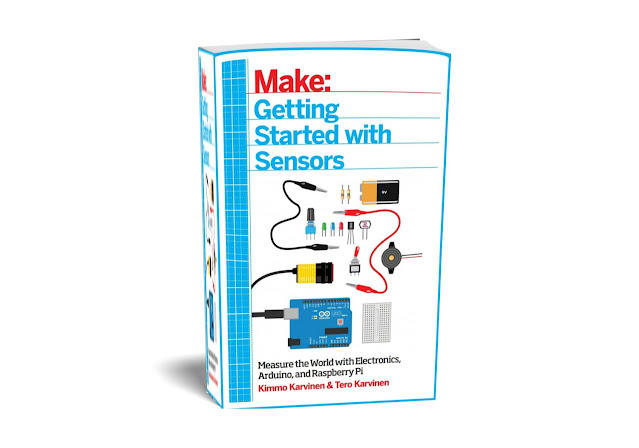Download Getting Started with Sensors: Measure the World with Electronics, Arduino, and Raspberry Pi pdf
Getting Started With Arduino
Picture Of The Book:
Getting Started With Arduino.
About The Book:
Sensors surround us. The world is full of them: infrared sensors in
motion detectors, carbon monoxide detectors in homes—even
tiny accelerometers, GPS modules, and cameras inside your
smartphone. Thanks to the proliferation of mobile devices,
sensors are now remarkably affordable, meaning you can
combine inexpensive sensors and microcontroller boards to
make your own devices.
This fully-illustrated, hands-on book teaches you to connect and
read sensors through a series of short projects. You’ll learn to use
the immensely popular Arduino and Raspberry Pi boards to
process data through simple programs you develop.
Take a moment and think how many sensory events happened to you from
the time you woke up to the time you began reading this book. It’s likely that
you can’t even list all the sensory occurrences. Not only do you constantly
sense the environment, but your senses also work together to compile a pic-
ture of the universe. For example, events such as people passing by, warm
sun shining on your face, or observing that a cool breeze in the morning is
getting warmer in the afternoon are all fine examples of your senses at work
and your mind processing sensations. But how can a robot or gadget have
similar input? You probably already know what makes this possible (you did
buy a book on the topic): sensors.
Adding sensors to a circuit expands its capabilities just as your own senses
expand your awareness and inform you about the world. Sensors provide an
input for information about an environment and work much like your own
senses. But sensation isn’t the only issue with sensors. A component doesn’t
necessarily have the ability to draw conclusions when a particular event oc-
curs. Say, for instance, that it is –5 degrees outside and you want to go for a
walk; what should you wear? You know, of course, that a coat and winter
clothing are in order, but a temperature sensor does not know this. It can
certainly provide you with a temperature reading, but it does not make judg-
ments or inferences about what you should wear—at least not at the com-
ponent level. For sensors to matter in the same way that your own sensations
and your reflection on these sensations matter, a level of data processing
needs to occur on the sensor data. Ultimately, sensors are components that
you wire so that, either through hardware or software, their data is processed
—and that’s what this book is about: how to wire sensors and process their
data.
Contents Of The Book:
Chapter 1: 1/Sensors..
Chapter 2: 2/Basic Sensors
Chapter 3: 3/Sensors and Arduino
Chapter 4: 4/Sensors and the Raspberry Pi
Chapter 5: A/ Troubleshooting Tactics.
Chapter 6: B/ Arduino IDE Setup.
Chapter 7: C/ Setting Up Raspberry Pi.
Chapter 8: D/ Bill of Materials.
Information About The Book:
Title: Getting Started with Sensors: Measure the World with Electronics, Arduino, and Raspberry Pi pdf.
Language: English.
Size: 1.91 Mb.
Pages: 140
Format: PDF
Author: Kimmo Karvinen and
Tero Karvinen

